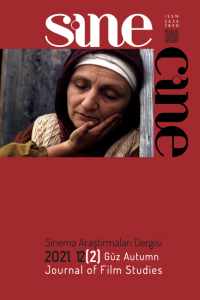Varlığın özü “tepenin ardı”nda Emin Alper'den bir varol(ama)ma öyküsü
Emin Alper’in ilk uzun metraj filmi Tepenin Ardı (2012) bireysel ve toplumsal bütünlüğün gerçekliğin özündeki bir ontolojik boşluk vasıtasıyla kurulduğunu göstermektedir. Film Faik, oğlu, torunları ve yanında çalışan bir Yörük ailesinin gözlerden uzak uçsuz bucaksız bir yaylada geçen hikâyesine odaklanır. Ancak bu hikâyede özellikle vurgulanan Faik’in “tepe- nin ardında” olduklarını iddia ettiği ama film boyunca hiç görünmeyen Yörüklerle bitmek bilmeyen çatışmasıdır. Varlıkları yalnızca bir kurgu, gerçeklikleri de ancak kurgulanarak var edilmekte olan Yörükler hikâyesiyle Emin Alper, sadece, insanların hayatta kalabilmek için bir öteki/düşman yaratma eğilimini göz önüne sermez. Filmin asıl vurgusu bireylerin ve toplumların “gerçekliklerinin” tam da o gerçekliği içine alıp yok etmekle tehdit eden on- tolojik bir boşluk ve hiçlik üzerine yapılandırılmış kurgular olduğudur. Bu çalışmada Slavoj Zizek’in en temel kavramlarından gerçek ve fantezi kurgusu temelinde Tepenin Ardı filmin- deki boşluk ve hiçlik üzerine kurgulanmış olan yapı incelenecektir.
The essence of existence in "behind the hill": a story of (non)exisence by Emin Alper
Emin Alper’s debut movie Tepenin Ardı (Behind The Hill, 2012) shows how reality and individual and social integrity are established through an ontological void at the core of reality itself. It tells the story of Faik, his son, his grandsons, and a Yoruk (nomad) family who work for him in a remote location on a vast plain. The story is focused on Faik’s conflicts with the Yoruks, who, he claims, live “beyond the hill,” but who, apart from their presence in Faik’s discourse, never actually appear throughout the movie. By telling this story of the Yoruks, whose existence is a “fiction” and whose reality is “fictionalized,” Emin Alper displays people’s need and tendency to create enemies of others. Moreover, he shows that the “reality” of individuals and societies is also a fiction, built upon an on- tological void that threatens to engulf that very reality. In order to analyze the structure of the movie, this article invokes two of Slavoj Zizek’s most significant concepts, the Real and fantasy reality
___
- ISSN: 2636-784X
- Yayın Aralığı: Yıllık
- Başlangıç: 2010
- Yayıncı: Semire Ruken Öztürk
Sayıdaki Diğer Makaleler
DOĞU AVRUPA SİNEMASINDA POST KOMÜNİST NOSTALJİ
SINIF'TA BİR YARGIÇ OLARAK OKUL
SINIF'TA BİR YARGIÇ OLARAK OKUL
Fırat OSMANOĞULLARI, Didem MUTLU
VARLIĞIN ÖZÜ “TEPENİN ARDI”NDA EMİN ALPER'DEN BİR VAROL(AMA)MA ÖYKÜSÜ
VARLIĞIN ÖZÜ “TEPENİN ARDI”NDA EMİN ALPER'DEN BİR VAROL(AMA)MA ÖYKÜSÜ
TEPENİN ARDI HOMOSOSYALLİK, AİLE VE ERKEKLİK
Varlığın özü “tepenin ardı”nda Emin Alper'den bir varol(ama)ma öyküsü
